The Culebra Cut
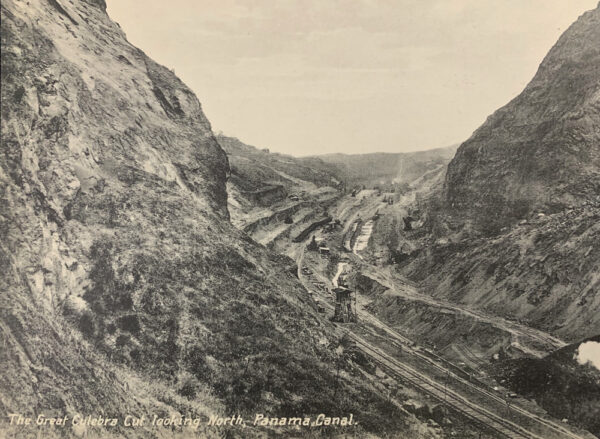
This is a morning with a touch of frantic family activity. We will have guests from both sides to show off the new digs to the kids who will have to clear things out when we are done with what we laughingly term “the Last Place.” The are grandchildren who will be accommodated under sunny skies with seasonal temperatures. In order to convey our helath and general well-being, we are cleaning up the stuff that we moved from the unit upstairs to the one on the first florr.
That involved some of the old work that is not quite complete. For example, the image above is from a set of twenty or thirty images our Grandfather collected in 1913 when he was helping The Phone Company complete the greatest construction effort in human history. At least the greatest one up to 110 years ago. A decent job of research would fill in the blanks on the net level of effort in the project- $350 Million back then. The glimpse at the Culebra Cut, the single most challenging component of that century’s Big Dig, shows you the scale of the effort.
There were other parts, of course. The French had tried to blow a sea-level canal through the sharp line of hills between the two great oceans. Due to the amount of dirt and rock involved and the diseases like Yellow Fever, they failed.
One of us made a point of visiting the venerable club where our connection to history occurred. Grandfather approached legendary Lieutenant Colonel George Goethals, third Chief Engineer of the Canal Project. He was innocently having lunch in a great wood-paneled hall with brilliant white linen covering the tables. Grandfather introduced himself as a functionary of the Bell System. He quickly advanced a plan to replace the communications system that would make the Canal a truly modern operating system. The key to it was to replace the nautical semaphore flag-crew who would raise flags to signal flooding and draining of the massive locks. Goethals arrived at a decision over his entree, and Grandfather was tasked to incorporate the telephone into the final design of the canal. No flags required.
The sea-level Canal could not be achieved. There was too much rock and too much height required. Instead, Goethals was determined to execute a plan with two artificial lakes as the key parts of the canal. The Gatun and Miraflores Lakes were created with four dams penetrated by massive “locks” of concrete and steel connecting them. Synchronizing the opening and closing of the gates between the lakes required teams of sailors who communicated in appropriate nautical fashion by raising and lowering pennants visible to the control tower. Grandfather proposed a means of communication that did not require fabric, ropes and pullies. Instead, they would be operated by instructions passed by telephone. Bell Telephones.
We passed the pictures around on the patio of the new unit. Holding the papers that our Grandfather collected more than a century ago to maintain his memory of the challenge was pretty cool. Wish he had lived long enough for us to have met him. Luncheons might have been a little livelier than usual. Maybe we can do something about that today!
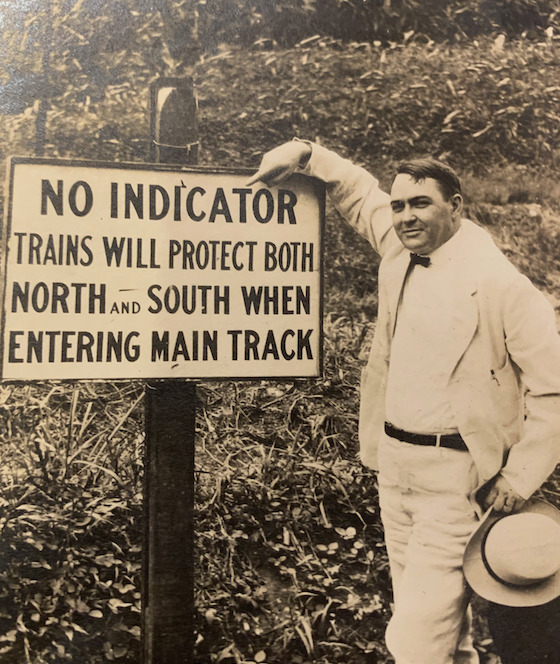
(Grandfather wanted his time with the message this sign preserved for history. As you can see, even a few words can have historic significance! Photo 1913 Socotra).
Copyright 2023 Vic Socotra
www.vicsocotra.com
Third Time is the Charm!

(District Stone SE9 is that dark block in the middle of the image, which took three tries to visit. It was not much different for the people who placed them all. In 1789, President George Washington gave personal orders to erect forty stones to mark the boundary of the intended capital city that would be named for him. The Stones were the first national monument of the New Nation. In 1791, he appointed Major Andrew Ellicott to survey the boundaries of the new Federal City. That required skilled workers, and Benjamin Banneker was identified as an expert surveyor who could lead and manage the effort. His participation is historic, since he had been born a free man of color, and his nomination was approved by Thomas Jefferson. Racial relations at the time were naturally strained by the legal status of slavery in the new Republic, but Banneker served as an official assistant surveyor and defied the extraordinary social barriers in place 2230-odd years ago. So, the first Monument of America also marked a signal achievement in our tumult of racial politics).
We are experiencing the unique changes in Virginia’s seasons now. It was similar to what the men who placed the Stones experienced: shifting weather conditions, long hours and precarious terrain made the surveying slow and difficult. After the team completed their calculations, Major Pierre Charles L’Enfant prepared the drawings for the city. So, you can see the various participants in a moderately large public project: Washington, Jefferson, L’Enfant, Ellicott and Banneker. They all had their fingers on the District Stones, and it is worth a moment to celebrate what they accomplished.
We talked about the District Stones yesterday, and the long series of minor challenges involved in visiting the site of the 40 that outline the District of Columbia. That requires a little work, since only 38 of the 40 remain where they were originally place. One of the two missing ones is supposedly in the private garage of a Maryland Department of Highways employee. It was misplaced during an attempt to set them all back in order. The one that is actually missing is represented by a small brass plaque in front of a liquor store not far from the North Stone.
There had been a series of adventures to find the Stones of the Distirct. The hunt ended, for me, with the rented powerboat passage across the vast and slowly moving Potomac River a few years ago.
Jon-Without (the “H”) and I were determined to finish off the hunt for the 40 Stones with a triumphant passage across the great river, and a last attempt to visit to the SE9 stone. That had defeated the dauntless party twice: Argo and I attempted the first approach on foot. The banks of the Potomac can be soggy and the Stone we sought had once been also used as a ferry landing. The level of the river had been up and down over the centuries. At this time the stone was almost as anonymous with other rubble on the shore. The Second Attempt to visit SE9 would be by kayak, rented from a concessioner on the east shore of the river.
A detailed de-briefing outlined the last attempts, the weaknesses and failures, and a plan was made to complete the adventure. We had pictures of the goal and objective. The stone was well defined, but had been moved once and was not protected by the green iron fence erected by the Daughters of the American Revolution in their centennial restoration in the 1890s.
Jon and I had been careful to complete the circuit. We had found the real North Stone, which has a more impressive version at the Northernmost corner of the District Diamond. The original one is not far away, and led to a decision not to join the ambiguity, which means there were technically 41 Stones in total with two missing. We had located the two now surrounded by housing project areas on the SE quadrant. There was great satisfaction in those attempts, and frank discussion about finding the office of the Maryland Department of Public Works to find the NE Stone that had been removed and was allegedly safely in the custody of an employee of the Department.
Today would mark “closure” on this attempt, and the completion of the Stone search. Then a couple drinks to celebrate and wrap up the book project about the search. It is still a doable deal, though the times have made the edges of the District a bit of hostile territory.
Jon and I were both still working in those days. That meant a Saturday was preferred for the last and most audacious attempt to close the project. We had arrived at the trip to the Last Stone after a remarkable adventure in the DC Impound lot, where SE8 is buried inside a vertical galvanized construction pipe. You can see the square top of it about four feet down from the lip of pipe. There was more to that story, though, and it caused a little tingle when we found the six WWII graves of the Nazis executed after they tried to poison reservoirs that slake the thirst of East Coast American families.
The diversion from the older story of the Stones to the newer one of World War II stones, not included in the 41 total, diverted our attention. Once we understood the mystery of the saboteurs landed by U-Boat in Long Island, their arrest, trial and execution, we were ready to find the Last Stone that erupts from the shallow water on the shore. A look back at the land approach on foot was a useful start. It meant taking our car to a place public land in the District, just a mile SE of the Stone in the Impound Lot, and the little garden with no stones that held the bodies of the Nazis executed by Mr. Hoover of the FBI.
Our attempt by rented paddle boats from National Harbor had deposited us in one of the wrong necks of the vast grey and brown river.
The feeling of the slow but insistent current was enough to raise a sense of unease. The look of the banks was imposing- not the landscape on which to beach the boat and plunge into the vegetation that had not been swept away. So, third time is the charm, and we thought we had thought it through.
OK. We don’t think the power of the mighty Potomac can be depicted in a manner that really conveys its strength. Stepping ashore, or even trying to traverse part of the muddy bank is a real challenge. If you are expecting a park-like serenity, you will not find it in the great drain from the hills inland. With rain comes enormous scouring energy to sweep trash from the urban sprawl that attends the river’s downward course. The debris tangles in the undergrowth in an astonishing mess that remains as the river lowers with the passing of the rain.
We will cut to the chase on this and not overwhelm you with data. There is an elegance to the crossing of the broad steam with the sight of the rebuilt Wilson Bridge across the water downstream. Half-seen things float around you, the absence of human contact in the midst of all that human habitation. It is quite an imposing experience, as is the beaching, and hop to the mud that covers the boots. The trash scattered up to what had been the high-water mark. Mostly plastic bottles, but with some other objects protruding from the muck that prudence would suggest we avoid.
We will not tell you about crossing the highwater mark to explore the thicket of brush and trees for the way forward. It had seemed so reasonable looking at the map, or from the satellite pictures that suggested the shore would be more inviting to our landing. That was not precisely the case.
We will leave you with the memorable moment in which we gave up, muck sucking on the boots, and the humid moist air beginning to join with sweat flooding down the back of a sweatshirt.
My last words to SE9, at least within a couple dozen feet, were of greetings and farewell. My advice to others who wish to visit, wait for a period of dry weather outside the Spring. There are no ceremonial Cherry Trees down by the impound lot, and the appearance of the Nazi graves was a significant reminder of some of the history we had tread. I think I expressed it more passionately at the time, but from the look on Jon’s face, the decision to end the hunt was unanimous.
The passage back to Alexandria was routine, as was the walk up to the Union Street Public House for a couple welcome cocktails. Looking back toward the river, we felt a certain perverse sense of accomplishment. We took sips of vodka tonic and thought about the Stones. All of them. And the men who put them there, in a world long ago.
“You know what I wanted to do when we finally found it?” I asked Jon.
He nodded, probably thinking of the same appropriate act to mark the scope of our adventure’s completion. It might have been a little disrespectful to America’s first monument, but it certainly would have felt right. We knew Andrew Ellicott and Benjamin Banneker’s boys, the work parties who shredded their way through forty miles of brush in precise straight line, must have done the same thing. And probably more than once.
Copyright 2020 Vic Socotra
www.vicsocotra.com
Adventures in Publishing

(This was the first attempt at documenting a neat little adventure in Washington, DC. The watercolor is by a good friend and by permission).
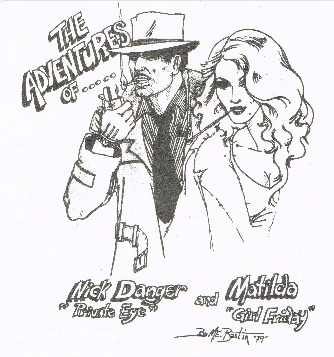
We enjoyed the warmest temperature of this day right at dawn. The darkness blended with departing night in petulant clouds hanging low over the west wing of Big Pink. There were still some publishing issues to get through before anything creative could get started. One of them is the nature of the business.
The first publication issued by Socotra House was the noir detective story set on an America ship of war. It was typed on an IBM Selectric Typewriter and ran for nearly a hundred days in the ship’s newspaper. “The Collected Adventures of Nick Danger, Third Eye” has been out in the publishing world for more than forty years. Or, better said, has been laying around the floors of several dozen closets across the Rim of the Pacific. It was the start of a long journey filled with mirth, excitement and a mild dyspeptic view of the way this world works.
Screen Shot 2022-09-18 at 9.14.28 AM.png
We started with the latest kinetic news from the Middle East. Apparently we launched some airstrikes in Syria in response to a drone attack that killed some American contractors. You may recall we have been adjacent or direct participants in the war there over the last couple decades. What is interesting is the Iranian aspect. Tehran provided the drones. One thing you may not have heard about is the new treaty bringing the Iranians back into full relations with Saudi Arabia. It was brokered in China, so it is part of a global re-shuffling we probably won’t like.
That got us into a legal discussion almost immediately, so that shows you how this gray day will see temperatures falling and moisture doing the same thing. The initial question was about copyright reversion, formatting and uploading with updated publication information. It is a fairly simple process that used to be done by actual businesses. There was a profound development in that industry that pre-dates the Pandemic Panic. Someone- we are not sure exactly who is responsible- kidnapped the entire workforce of editors. It probably started around the time our society started to tug at the old rails that carried us generally along the same path.
We agreed, as a group who have been scribbling things through the big change. So, as a group we have members who sold College Textbooks, signed up authors, attended publication events and the appurtenances of “launching” a new book. The old system was frustrating but we understood how the laborious slow process worked. Now, there is a new world in publishing that produces volumes-on-demand in at least three major formats: traditional hard-back, Trade and paperback editions and direct digital delivery. The people that do the new stuff, posting, linking, annotating is done by a new set of people who do everything except the marketing.
That drew us off the legal stuff and into the sales side of the business. We have published several books without much thought about what was next for them. Which essentially was not much. There had been an early effort about living in large Condominium Buildings adjacent to the Most Powerful City on Earth. With a remarkable cast of residents. That was fun but unlikely to hit the best seller list.
The one we wound up talking about was “Stones of the District.” That was an adventure from the early ‘Oughts. All of us worked in the District at various points in military or academic careers. We knew the city mostly in the shape of passing through parts of it to get to our Government jobs or customers. Being immersed in it, the early history of the new capital city had a certain magic, since those people were creating something entirely new in the ways of nationhood.
One of those things was the creation of the District of Columbia, a square blob of territory spanning the Potomac in what had been the colonies- now states- of Virginia and Maryland. Ten miles on a side, it was intended to be undisputed territory and the home to the national government. The lay-out was carved through the trees and over streams by some hardy young people, and a great story that inspired a crew of reprobates to follow their trail from the Southern stone through the ten mile borders of the District’s SE, NE, NW and SW quarters.
There were forty markers of the miles around Washington. All but two are still in place. The Federal Part is- was- pretty safe. The twenty stones on the west quandrants were easy to find and document. Except for some reservoirs and canals which require special permission to access. And deer in the placid river-carved ravines in the middle of the city. The further from the Federal stuff, and nice homes of senior residents who work there, things range quickly into other adventures. Encounters with people who use stones as centerpieces of other commercial activities. Safety and security concerns rose as did security for the exploration parties. A few stones required multiple visits, since they were also social center points for groups of young people who did not appear to wish to share the venues.
One of the stranger visits was to the Last Stone. The significance was palpable, since it was located in a place no one wants to go. Ever. The DC Impound Lot just inland from the Potomac. We enjoyed that one a lot in the context of our times. We are pleased to have gone, found the Stone and completed the trek. But it was weird and felt dangerous at the time. These days, it may be fatal.
We may get to that tomorrow. It was fun, but we do not recommend actually doing it until things settle down a bit. It might be more fun to just read about it.
Copyright 2023 Vic Socotra
www.vicsocotra.com
Stage Six and Some Deep Smoke

Visitors march past Yoshino cherry blossoms near the Tidal Basin on Thursday, March 23, 2023, in Washington. (AP Photo/Nathan Howard)
Memorandum for the Director, Naval Intelligence
The Pentagon, Washington, D.C.
“May I take this opportunity of commending your officer for his efforts in this matter; without the knowledge of the French language, he was able to make contact with one of the cleverest band of Corsican counterfeit passers operating in the Mediterranean Basin, a band which the Surete’ Nationale had been trying to disperse for a number of years; he obtained the confidence of the members of this band who, heretofore, had boasted that no police officer would ever enter into their organization under the guise of a purchaser. He did this through his own resourcefulness, as no one was there to guide him while in contact with members of this band.”
Very truly yours,
A.A. Christides
U.S. Treasury Representative, Paris, France
December 31, 1952
OK: this is a little complex in terms of times this morning. We are sitting and looking at a pleassant 4th day of Spring. It is still yearly in a new decade vibrant with life. The Cherry Blossoms here in Washington? Today is the Day we hit Stage Six. So, we ought to remember this one, since it could be one of those world historic days people look back on and say “What on Earth were those people thinking?”
In the case of this particular Thursday in late March, President Xi of China traveled to Moscow to announce everything is going to be different in the world. According to him, the American Century is officially “done.” Given the festival of odd news cascading through the cycle, it is entirely possible he is right. But what a thrill it has been to live in this time in this wonderful place!
Just in case it is almost over, we thought we would drag out some ancient history, courtesy of Big Smoke Tom Duvall. This sea story dates back to the early 1950s, when the world was remade by America’s strength. We got a long note back in 2008 from Big Smoke about another earlier year. He was retired then and dead now, both events deep in the country. Back then, Tom was sculpting his memoirs, and I agreed to help get some of them ready for publication. This is his story, not ours, but bear with us, since he gave us the sea story, but not the full context of those times.
And a note about those times. It is the only letter Socotra House has recieved that contained a threat and a request. It came in a warning to use only his words, since if any others were used there could be trouble.
Put your feet up and relax. It is 1952. The war in Korea is an unpopular and bloody stalemate, and peace talks have been postponed. The final peace treaty with Japan, the war before, is just seven months old, and the former enemy has regained the appurtenances of self-government. That is one of the reason Big Smoke was back from Japan, where he had been the Top Cop in Yokosuka under military law.
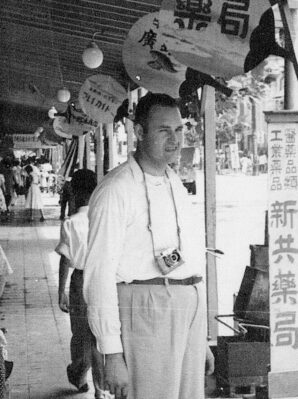
(Big Smoke in the 1950s, camera ready).
It is a curious thing from long ago. People were still talking about the UFO scare here on the
East Coast. Unidentified objects had buzzed the capital, taking evasive action after fighters were scrambled to investigate, and which returned after the jets departed. Sound familiar? Sometimes we need the aliens and sometimes we don’t.
In that same month, General of the Army Dwight Eisenhower had been elected President, and the US military had detonated the first hydrogen bomb at Eniwetok atoll. The Navy had laid the keel for the first nuclear-powered submarine, named for the craft imagined first by author Jules Verne. The USS Nautilus (SSN-571).
Regardless of how strange things are right now as we labor through our version of the Roaring Twenties, the year of 1952 has all the strangeness anyone can handle. Big Smoke said it this way:
“I was assigned to the Naval District Intelligence Office, located on the grounds of the Naval Observatory on Massachusetts Avenue in Northwest Washington. In those days, the District was responsible for most of the day-to-day activities of the Service.”
“The District managed the Shore Patrol, determined uniform policy, maintained security and ran Naval Intelligence in its area of responsibility. Just up the road was Ward Circle, where the Navy had run the big secret of WW II- the code-breaking activities that helped beat Japan. Goodness knows what they were doing in 1952. We knew later, but it was a place you did not talk about.”
The Observatory was home to the Chief of Naval Operations. That was before the stately home at Number 1 Observatory Circle was appropriated by the Vice President. It was home to one of the oldest scientific agencies in the country, having been established in 1830 to surpass Greenwich as the premier center of the science for safe navigation.
The Depot of Charts and Instruments took care of the U.S. Navy’s precision chronometers and maps. It had been downtown on the Potomac, at Navy Hill in Foggy Bottom until 1893, when pollution from the growing number of lights rendered the telescopes inefficient for precision measurements.
The Admirals selected a perfect circle of property on the heights above the city at 3450 Massachusetts Avenue Northwest. The observatory and library were considered as “world class” since the compound was far away from the lights of the downtown area.
Since 1845, the Observatory had determined the time with the world’s first vulcanized time ball, created to Superintendent Matthew Fontaine Maury’s specifications by Charles Goodyear. It was installed atop the dome of the 9.6-inch telescope. When the time-ball was dropped, a flag was mechanically raised, letting all ships and civilians know it was precisely noon.
By the time I was there the time ball was gone, and the Observatory determined time with a photographic zenith tube (PZT), an instrument that points straight up and photographs selected stars crossing the zenith. The Time Service transmitted the data via telegraph lines to the Navy Department. It also activated the Washington fire bells at 0700, 1200, and 1800.
When Tom got orders to the Observatory to work for ONI’s Director of Counterintelligence, they had him take up residence in Kalorama, a DC neighborhood on Wyoming Avenue. Character of it? A lot of embassies and counselor residences. Today, the place he lived in is the first large building on the left of an old home at 2107 Wyoming Ave, and it has a sign on it, “The French School.”
Directly across from this is a white office building that was the office of the Director of SDEC- the Service de Documentation Exterieure et de Contre-espionnage. His name was Philipe Thyraud de Vosjoli, and he was head of French Intelligence in the United States (and had a beautiful assistant by the name of Janine but that’s another story).
The French had a problem with currency, and they wanted some help. That is how I wound up in Europe, assigned to liaison duties with the Surite Nationale.
Halfway down the block on Wyoming Avenue was the home of the Director of Naval Intelligence, Rear Admiral Carl F. Espe.
As we generally went to work about the same time, we often would stop and have a few words. It was the last week in November 1952 when I was told that my boss, the District Intelligence Officer, Captain Noble Abrahams, wanted to see me. He called me into his office and said the DNI needed to see me right away and that one of the agents was bringing a car around to take me up to the Pentagon and would wait to bring me back.
When we arrived at the DNI’s office, the secretary told me to go right in, they were waiting for me. I went in and there were several people in the office with Admiral Espe. The Admiral immediately went into the problem at hand, stating that whenever Sixth Fleet vessels went into French ports, it was flooded with U.S. counterfeit currency. The French were getting very upset over this, particularly since no military organizations in Europe would give them any assistance, and the U.S. Treasury Department had no agents in Europe to deal with counterfeit cash.
Here was the root of the problem. At that time in the 1950’s, all military and U.S. Government personnel stationed in Europe were paid in MPC (Military Payment Certificates) except for Naval Personnel stationed aboard ships operating in the area. Needless to say, they knew they could get much more on the Black Market, although they were instructed to exchange their dollars for local currency.
The Admiral went on to say that he remembered talking to me on his visits to Yokosuka that I often mentioned that we had problems with counterfeiting. What would I think of going to France and helping the Surete’ out with the problem they had? Of course, I told him I was ready to leave immediately. Then somebody spoke up and said “Admiral, he has to get a passport and that’s going to take at least 48 hours.”
Admiral Espe said “Let’s get on with the problem and stop talking about it. Tom, while you are gone I will take care of your apartment.”
With that we went out. The agent who had brought me to the Pentagon was waiting. The Captain told him: “Take Tom and get him into uniform – he has to be in one for this project. Get him up to the Bureau of Personnel- BUPERS- and start processing him to get a U.S. passport.”
It was done and in the first week in December, 1952, I departed from the MATS (Military Airport Transport Service) Terminal, Washington National Airport, arriving at Orly Airport France on the first Sunday in December. That would be where this adventure in the American Century begins. More on that tomorrow, though, when the Cherry Blossoms are ripe and waving around the Tidal Basin!
Copyright 2023 Vic Socotra
www.vicsocotra.com
Weather Report: Bank Runs and Presidential Politics

Third day of Spring? OK. We are prepared to deal with it. The Banks? Some of them seem to be failing. It isn’t the Fall of the West, or at least not exactly. China’s President Xi is visiting Moscow to establish a new global order. It is curiously inverted from the one we used to know. Remember? China was used as a proxy instrumment in the American War in Vietnam by the Russians. Now Mr. Putin appears to want help from the Chinese in their adventure in Ukraine.
The inversion is happening all over. Iran is providing weapons to Mr. Putin. That includes drones and artillery shells.
The latter is necessary because the vast Cold War stocks have been drawn down in the endless barrages across the Donbas River basin. There will be a new world order, according to President Xi. So perhaps we should remember this date as something special in our wobbling global history. A new world, centered on what was called the Middle Kingdom. Girded by a Belt and Road that links factories to consumers in a new and dramatic web of supply chains.
Russia and China linked in a manner that does not comport with the old way of viewing things. The manufacturing done near sprawling Shanghai was once done in Ohio and Indiana. Our drugs and baby formulas also come from overseas these days. So this will be something new to add to our calculations on how things work. Our old perceptions have been eroded and transformed. We still have vague memories of being The Arsenal of Democracy. We assume that if necessary, we can energize the great engine of productivity. Except parts of that engine are located near Shanghai and unlikely to respond to our just requirements.
It may be remembered as today, or yesterday when Putin and Xi met to seal the deal. It is possible this is all a little rushed in the implementation, just as former First Lady Clinton’s drive for the Presidency got a little in front of her ski-tips. Her race against Mr. Trump didn’t have quite the “umph” required. Mr. Biden- billed as an “old School” politician we recognize from our our history of pugnacious politics- scored a record number of ballots from his basement campaign. And now we are engaged in a nineteen month battle to see if this curious new alignment will be returned to power.
There is a lot at stake in this one, and the pile of cards to be played is enormous. Today, we may see how the Central Bank of America decides to increase interest rates. That necessary adjustment to control inflation is at the root of issue regarding the collapse of the bond market, since those rate are set and in force for the length of time in the issuing value. Which is to say, a bond’s value set on the old low-interest rates are now underwater. The interest they produce is less than what inflation is doing to the value. That means the $31 Trillion dollars in debt we have piled up to be a problem for everyone holding Treasury Notes worldwide. It might mean the destruction of the global financial order.
We have privately considered this to be just another of the self-inflicted wounds with which we have inflicted on our grandkids. We will have a chance to talk to a couple of those young humans this weekend and see how they like the prospect of taking out the equivalent of massive student loans while they are still in grade-school. We have a suspicion they might resent the comfort of our attempt at retirement.
There has been a traditional answer in human affairs. It still works, since we intend to exit, stage left, before they realize what we have done to them.
Copyright 2023 Vic Socotra
www.vicsocotra.com
Living and Dining

(The decor? Joel owned the place for nearly twenty years. He used it as the executive suite for his business, suitable for hosting guests for as many days as the business took. He is a Texan by birth, and the place exudes a certain ‘oughties look. In fact, it looks a little like the Willow did when it was still open).
Minor momentum on The Move. The Russian Lady who manages the rental unit we let go in order to address medial challenges here at Big Pink. This is the view from the reclining chairs in what we call the “Living Room” of the new place on the first floor. The perspective is over the Bar area looking into the Dining Room. There is a window over there, a unique footing to the two-bedroom unit we purchased. The end-units are unique in having the windows to daylight rather than solid walls to keep the neighbors out.
Or in, as the case may be.
We do not know if former President Trump will be arrested later today, so we will stand by on that aspect of the Continuing Crisis. We don’t quite know what that all means. It would seem to be a change to the way our country works, filling out arrest warrants on predecessors in the Oval Office. Not that we wouldn’t have been in favor of the change, depending on which replacements we are discussing. But if it turns out we can just do all the legal stuff right here at home it would save a lot of time.
The rest of it is a big deal with a great many moving parts. A “historic moment,” if you will. The replacement of the PetroDollar as world currency is just one of those sorts of details. We will pay our part of it as it comes due. In San Francisco, they are talking about Reparations, taking from those who committed no sin and giving to those who were not alive to be wronged. It will just play out the way it will, all of the various equities satisfied.
Our version of the Great ReSet will be a little easier here at home. After all, what could go wrong? This has all been set in motion by much wiser folks than we are. At least we have a dining room now, and that is a decent place to start! We fully intend to both live and dine right here!
Copyright 2023 Vic Socotra
www.vicsocotra.com
Stage Five
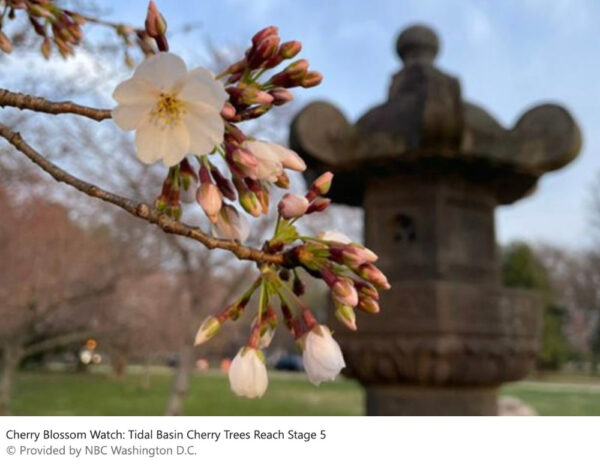
We slacked on the critical Meteorologic update. Fervent apologies. Stage Five went down on Saturday. There is a distinct pale-pinkish blush of bloom around the Tidal Basin. It lends a pale blooming cherubic and sanguine flush. Full-bloom may have been affected in duration, but the local weather-guesser claims we hit Stage Six on Thursday and we will hang onto it as long as possible.
Copyright 2023 Vic Socotra
www.vicsocotra.com
The Ruth’s Café Collision Derby
07 April 1979
The Ruth’s Café Collision Derby
1979 Abroad on Japan’s Kanto Plain
Editor’s Note: On this morning in the pre-Spring of 2023, the President of China is talking to the Czar of Russia about how to effectively end the American Century. Accordingly, we thought this little slice of life would show how some people thought about it while living it.
– Vic 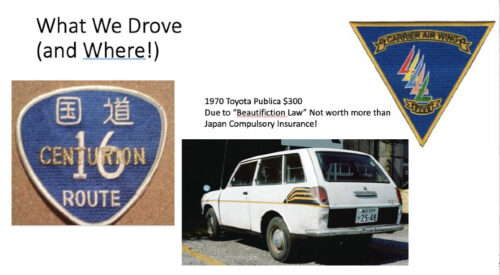
It had been a busy week, and we were leaving again soon. It meant there was madness in the air, the madness that went with the going-to-sea, maybe-to-war mind set. In the grips of that, we found our heroes enjoying their last hours of liberty with gusto.
They had found themselves delivered back to the tender mercies of Ma Midway (CV-41) after a remarkable line period. A busy workday on Friday, hauling gear up the ladders and into Ready Room Four. It could have been a night for a nice dinner and quiet contemplation of the rigors to come. But Fridays are The Night at the Officer’s Club at Atsugi Naval Air Station, and thus it was time for a pre-disco dining extravaganza out at Ruth’s house.
Ruth is a Navy Nurse, and she is a very nice person who takes care of Her Boys. Gaijin women who are not already attached to someone are a rarity on the Kanto Plain, which helps account for the beauty magnification factor. West of Hawaii, 5’s become 8’s, and 7’s become 10’s. Fact of life. Ruth handles it well, though, and has adapted to the situation by more or less adopting us as her own personal fighter squadron. She feeds us and leads us around for our own protection. She is a queen, she knows it, and treats her subjects with an even hand. Neat lady. What’s more, with her hefty nurse’s Basic Allowance for Quarters, she can live off-base out by the Hayama resort on the Sagami-wan, in a little house halfway up a hill. It has a splendid view, made the more so by the constant exposure to the gray steel windowless walls of our current abode. It is a general delight to be at her place.
This night the pre-Disco meal was chicken-stuffed crepes, hearty neo-Caesar salad and wonderful warm loaves of bread. The Japanese have great bread. They encountered it for the first time after the war, and discovered it had many uses. They even decided the American variety was too bland, and, in typical Japanese fashion, looked around for the best bread in the world and found it in France. Voila! Here it is! The ambiance was delightfully non-industrial, the food was outstanding, the wine divine. If anything, the bottle of rum that Scooter poured into the dessert daiquiris was superfluous. But good.
We have a variety of cars strewn up and down the hill. Cars are one of the little quirks here. First, you drive on the wrong side of the road. That is sorta cool. Second, the cars are only worth the amount of Japanese Compulsory Insurance that remains on the policy. There is a public law that any vehicle over four years of age has to go through a rehabilitation and certification process that in effect costs more than buying a new car. They call it the Beautification Law. Due to the Status of Forces Agreement, we are exempt. Accordingly, if you see a trashed-out car hurtling down Telephone Pole Road headed for Yokohama, you can be sure it is one of us. I own a clapped-out1970 Toyota Publica mini-wagon with three months left on the policy, making it worth exactly 42,000 yen. I had artfully painted the squadron tail flashes on the sides. Although you could see the roadway through holes in the floorboards, I considered it a beauty.
I have been stashing the little gaijin-mobile over at Ruth’s during our at-sea periods. It has an old battery, not worth replacing, that has a tendency to go dead as a doornail. So as our group was leaving the house I enlisted the hearty bodies of L.P., Jambo, Space, Splash, Scooter, Scotty, and Nasty in levitating the little econo-box out of the driveway, bouncing it backwards over the curb.
“Cut the wheel! Cut it hard port!” someone shouted. I wondered if they were talking to me….
A near run into the benjo ditch on the other side of the road, a quick transition, and I almost hit L.P’s 911 Porsche Targa. He had brought it over with his household goods with the idea of selling it on the local economy. The Japanese love hot cars. Given traffic moves about five miles an hour during the day, it is amusing to watch the Jags and Mercedes creeping along. I decided a look behind might prove helpful as I navigated backwards down the steep hill. The trick was to get the thing rolling and pop the clutch, using the motion of the wheels to turn the engine. Splash stayed with me almost the whole way down the hill, till I figured out it was just not going to start in reverse. I swerved into the curb and got it rolling forwards. I jammed it into second gear with my left hand and slipped my foot of the clutch. Well alright! The little monster started right up. I put the clutch in, kept the revs up, and hoped it wouldn’t die before I ran out of incline. Splash watched me disappear around the corner, about a half-mile downhill from his car.
“Hey, thanks Splash!” I yelled into the slipstream, “see Ya!”
I reached the traffic light at the bottom on the hill and stopped. It was red, and it was the right thing to do so I pulled over, foot on the gas, way short of the white line so as to have a fighting chance if the car crapped out. Space’s patented Space Shuttle van pulled up next to me. Scotty leaned out the passenger side and inquired if it was O.K. “No sweat” I replied, about the same time the Nasty-mobile showed up and intentionally read-ended them. I saw the impact push the van about five feet down-slope. Space crammed it into reverse and hit the gas. Nasty sort of got pushed back uphill. Tires were smoking on the wet pavement, and the sound of the vehicles rubbing metal was real interesting.
I noticed Ruth’s horrified face in the passenger side of Nasty’s car. The light changed, Space went into first and roared off toward Atsugi. Nasty appeared to take it as a challenge and vanished in pursuit. I had to keep the revs up anyway, so what the hell….
We joined the frantic procession of normal traffic out on the highway. The road is narrow, as they all are in the Kanto Plain, and has steep open benjo sewers on each side. This doesn’t keep the locals from driving at breakneck speeds and performing outré maneuvers. About the only thing it does keep them from doing is driving drunk. You see, up till about fifteen years ago, drunkenness was a perfectly legal excuse for accidents. Unfortunately, with the onset of massive casualties it became obvious that this remarkable notion had to give way to a more rational approach. As they so often do, once the Japanese make a decision they make a tough one. Even a beer – a single beer – will make you legally drunk. Should you cause an accident, or hurt someone, you may as well throw away the key.
Unfortunately, we were drunk Yankees, driving $175 cars, in a toy-sized land. And it was off to the races. My first indication of this was Jambo flying by into oncoming traffic. He cut off a taxi and gained the lead. We rounded a bend, the line slowed down, and out of nowhere flashed a yellow Porsche 911, beating out the entire crowd and disappearing into a curve. This was an outrage too great to be borne …. it was pandemonium on the roadway …. the drivers were flying their aircaft, unconscious of the civilian life around them. We approached the first light on the way into town. Red. The racers were in line astern. Oh my goodness…I saw the green station-wagon’s back up light go on; in an inexorable chain reaction the cars bumped, jumped, and began to move toward my grill…the Space Shuttle into first!
Tires smoking, the line begin to move out into the intersection … the taxi behind me is keeping his distance … the light goes green and the race is on … it’s a cacophony of straining water pumps, abused gear boxes, over-revved little engines. I am working with my handbrake only, to avoid taking my foot off the accelerator …. Around a downward curving turn, into another red light …. the Porsche stops …. the Jambo special goes left, the Nastymobile to the right, drifting through the red signal with tires burning …. past two amazed Japanese policemen …. Oops …. I try to look inscrutable …. a crowd of pedestrians are bent over in amazement …. their mouths are beginning to work as the signal changes …. see ya! …. the racers roar down the narrow Ginza …. hard port! A light, hard brake, then onto R-16, four lanes and it is all guts and drag-racing technique …. the last quarter mile to the gates of the Atsugi Naval Air Station…. hard starboard and into the chicane …. I stop the car, dim my lights, and the Marine on duty salutes me. I turn on the lights, turn right and follow the slow procession up to the Club.
We park the cars giggling like the drunken idiots we undoubtedly are. A leisurely stroll up to the doors where I can hear the sound system blaring some repetitive beat. On the way in I see one or the guys from Attack Squadron 56.
“Hey Vic” says one of them. “How’s it going?”
“Oh you know” I say with a negligent wave, “there just ain’t nothing to do in Japan.”
“Yeah,” says Jambo, “except for maybe fifteen years.”
Copyright 2001 Vic Socotra
www.vicsocotra.com
Fire Never Peaks Not Fade Away
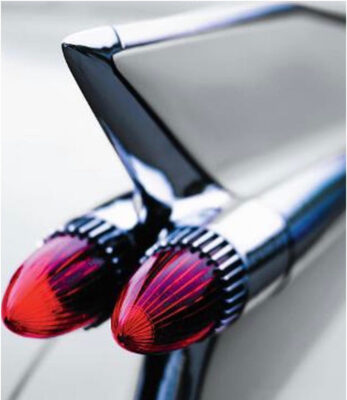
Momma told her 1st how it’s gonna be
She gave her burn-out love to me
I wanna live all night-n-day
Life lites not fade away
My lites’re bigger than a Cadillac’s
They shine brightest when I’m home-driving back
Since my love for life’s gotta be real
Loving feeling for life not fade away
Momma done told me how it’s gonna be
Days-n-nites gonna give their love to me
Love’ll last till the end day
Me o my. say hey
There’s more to the picture
Than meets the eye
Say hey, me o my.
Out of sky blue and into space black
We pay and pay for this, but they give us squat back
Best to burn out than fade away
Kings come and go but all are forgotten
Say hey, me o my
Only self-made ones stay in our hearts for certain
A burning life can never die
There’s more to the picture
Than meets the eye
Rust never sleeps
Fire never peaks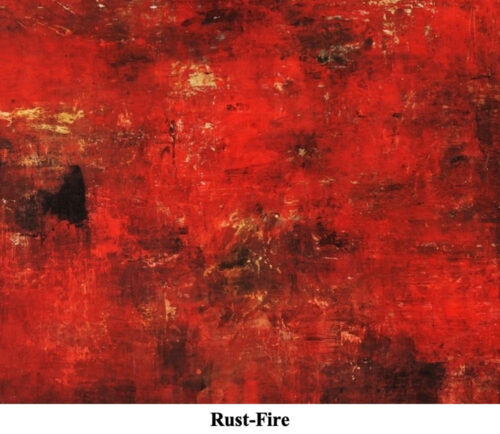
Copyright 2023 My Isle Seat
www.vicsocotra.com
Shanghai Princess
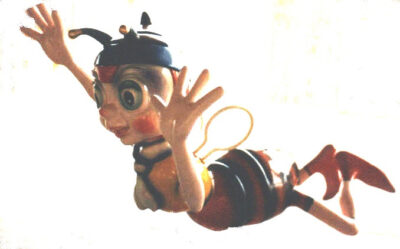
(Shanghai metered child ride, 1998. Photo Socotra)
There was some controversy about the image this morning. We were going for something that conveys whimsy. There had been a brief discussion about her when it surfaced. It had been in an old directory buried two or three levels down in the little box that serves our modest archival needs at Big Pink. She was not controversial when the picture was taken some years ago. She waited patiently on a Shanghai street the last time any of us were there. She is- or was- a part of a ride for young children on the street between busy places.
Taken as she is now, she typified that trip. It was before that century turned. It was a time of remarkable mobility. In our group, the world ocean was not a liquid barrier but a path to other places. The heavens above offered rapid transit to virtually anywhere. When home, we could fill up the car and drive to Omaha or Salt Lake City if the notion struck us.
This morning in this place by the Potomac things seem a little more constricted. There is talk from the judiciary apparatus of the Southern Southern District of New York. A former President “may be arrested” for a criminal act allegedly committed several years ago. The matter had been litigated before, so it appears to no longer be judicial in nature but political.
It is another odd component in the curious parade of current events. There are apparently calls for demonstrations in response to something that has not yet occurred. We took a poll in the Writer’s Section about interest in street protests, particularly in light of recent disclosures about strange events with crowds. We asked twice but could detect none.
It feels a little like the mud in Ukraine slowing down the big Spring Offensive. We assume it will firm up shortly and things will move a little faster!
Copyright 2023 Vic Socotra
www.vicsocotra.com
